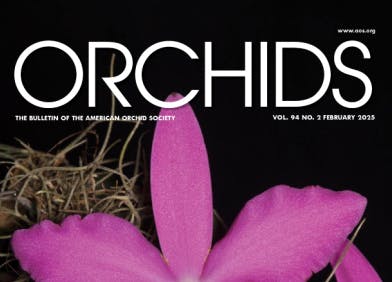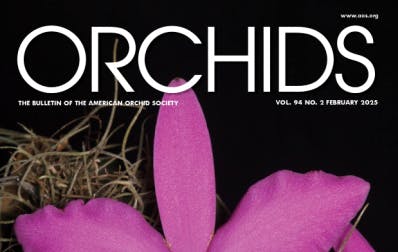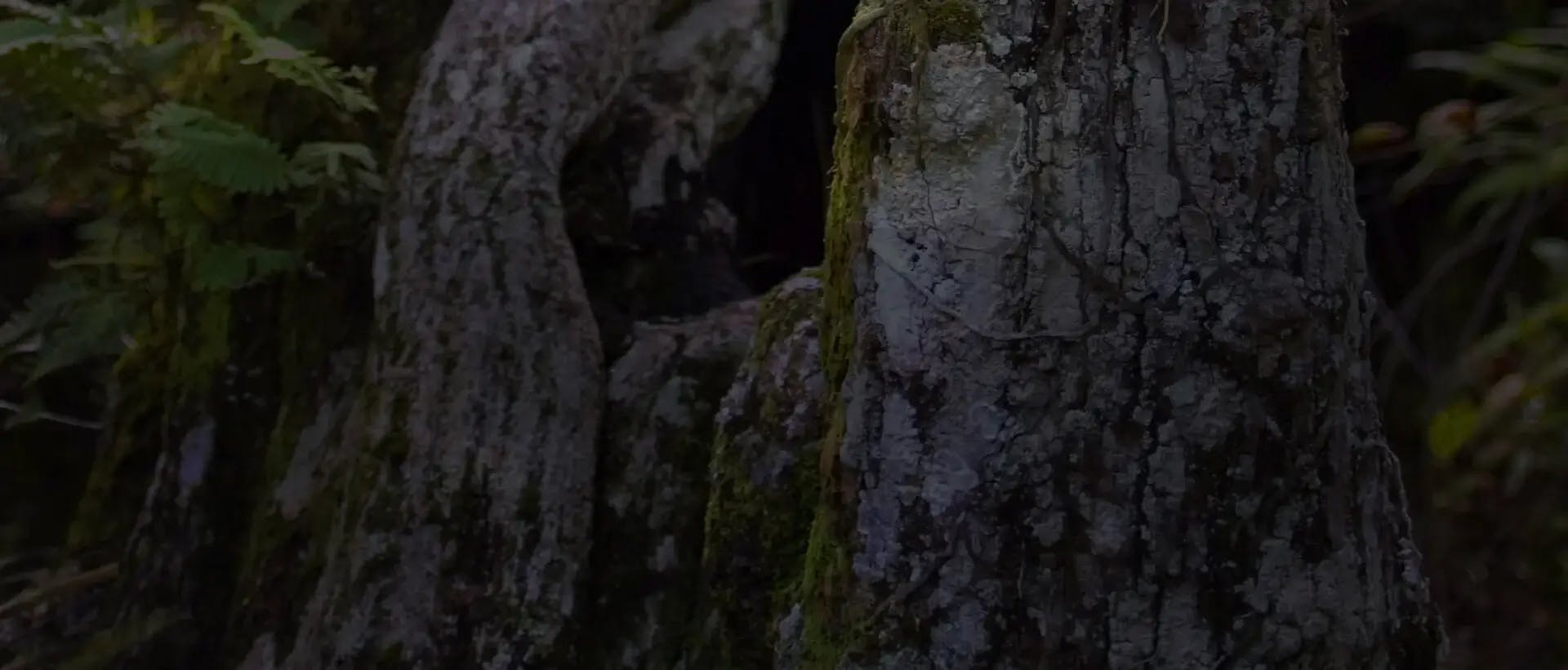
I am now 75 years old and no longer buy seedlings, as I am afraid I will not be around to see them bloom. When I see specimen plants or large plants come up for sale or for bid in auctions, they get my attention. Both plants came from different auctions held by the Santa Barbara Orchid Estate in Santa Barbara, California. So, one key is to start big and try to grow bigger. Brassavola Crazyarachno is a cross of Brassavola perrinii × Brassavola appendiculata. I have had these plants for about seven years. In September of 2022, I received an AOS Certificate of Cultural Merit (an award that recognizes the grower’s outstanding culture) of 86 points for B. Crazyarachno.
[1] The author with his award-winning B. Crazyarachno ‘Crazydoc’ CCM/AOS.

For me both of these orchids bloom in the fall (September–early December). As a bonus they both have a nice nighttime fragrance. I use rainwater that I collect in a barrel. I have a water heater used to prevent ice from forming on livestock water supplies in it so I can collect water all year round. I use a 3-gallon (11.35 l) sprayer to water and fertilize. I water (spray mist) almost every day from midApril to mid-October. In the winter I water on any sunny day, but usually I will not go more than four days without misting. Every Sunday all year long, I fertilize with Jack’s 10-30-20, one scoop/tank.
[2] The author’s B. flagellaris.

[3] The author’s plants in their winter home.

Both plants started out in pots that they, long before I acquired them, had grown out of, so they are just massive root balls. There is no potting medium in either pot, making watering easy. I just spray them until the water drips off. In the winter I turn on my overhead fan and run it for 1–3 hours after watering. This helps to keep the humidity around 70–80 percent RH. In the winter, temperatures range from 62 to 66 F (16.7–18.9 C) at night to 70–78 F (21.1–25.6 C) in the daytime. My guess is that they may even get a little colder on some Chicago nights. In midMay they both go outside and remain there until mid-September depending on the weather. Temperatures range from a low of around 50 F (10 C) to a high near 100 F (37.8 C) on some exceptionally hot and humid Chicago summer days. Outside of these extremes, summer temperatures run 65–85 F (18.3–29.4 C). Both plants have pencil-like terete leaves, indicating they both can tolerate some sun and heat. During their summer sojourn, both are shaded until about 10 a.m., more or less in full sun from about 10 a.m. to 2 p.m. and then again shaded from the intense afternoon sun. They love a nice thunderstorm in the summer, and both seem to be pretty much disease and insect free, although I do spray a preventative fungicide a couple of times during the summer. They set blooms over the course of 4–6 weeks and remain in flower for at least six weeks, creating spectacular plants for our fall shows.
[4] These plants started out in medium-size pots but have long since outgrown them and are effectively mounted on themselves.

[5] The award photograph of B. Crazyarachno ‘Crazydoc’ CCM/AOS taken by Nile Dusdieker.
— Dr. Larry Sexton, a retired dentist, is an American Orchid Society trustee, member of the Society’s editorial board, as well as a member of the audit, awards, finance and investment committees. He is an accredited judge in the Chicago Judging Center (email orkiddoc@aol.com).











